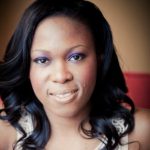
With graduation fast approaching, it’s natural to feel apprehensive about finding a job that will be both interesting and fulfilling. Even if you manage to find a position that meets your wildest expectations, how do you know that your initial excitement will last?
According to Forbes Magazine, a recent survey by the Conference Board indicates that more than 50% of Americans are unhappy at work. Yet unlike most people, Dan Gertsacov (HBS ‘04) wakes up every morning to do what he loves. While he is currently the Chief Digital Officer at McDonald’s Latin America by day, he is also a part-time entrepreneur who invests in and advises a range of companies and startup ventures.
Dan has also found a way to connect his personal passion for cooking with his portfolio of investments. While he loves to attend cooking schools and is honing his skills as a chef, he has no plans to enter the culinary field. The lifestyle and the pay does not make sense for him and his family. Instead, he found a way to make cooking a part of his life by investing in a now successful local restaurant started by a promising chef. In this sense, Dan is a 10% entrepreneur.
 Dan’s story is one of many covered in the new book, The 10% Entrepreneur, by Patrick McGinnis (HBS ‘04). McGinnis, who met Gertsacov during their time at HBS, is also known for having coined the term ‘FOMO’ – or ‘Fear of Missing Out’ – in the pages of The Harbus during his EC year. Today, the term, invented on our very own campus, has gone global.
Dan’s story is one of many covered in the new book, The 10% Entrepreneur, by Patrick McGinnis (HBS ‘04). McGinnis, who met Gertsacov during their time at HBS, is also known for having coined the term ‘FOMO’ – or ‘Fear of Missing Out’ – in the pages of The Harbus during his EC year. Today, the term, invented on our very own campus, has gone global.
In the book, McGinnis explains that being a 10% entrepreneur serves as an outlet outside of full-time employment that allows you to pursue your interests and your passions and leverage your network, all in a profitable way. As a 10% Entrepreneur, you seek to allocate at least 10% of your time and if possible, 10% of your capital in order to invest in, advise or start new ventures all without leaving your day job. Doing so provides several critical benefits.
First, as a 10% Entrepreneur, you create a Plan B. As you’ve likely learned here at HBS, when you’re creating a portfolio, you need to make sure it is diversified. So why don’t you apply this same mindset when building your career? That dream job at a hedge fund or investment bank may look good today, but when the next financial crisis rolls around, you could find yourself at the next Lehman Brothers or Long-Term Capital Management. You did everything right, but it didn’t matter. We all know stories of workers who have been terminated, have burned out from stress or have been trapped in stalled careers, but don’t let that be you. By using your 10% to create a Plan B and to diversify, you can create downside protection.
Second, you can create multiple paths to upside by becoming a shareholder in a promising new venture. When you leave HBS, you and your classmates will go in many different directions. Over time, however, your paths may very well meet again. You’ll have chances to invest, become an advisor (trading your time for equity – or “sweat equity”), or even co-found new companies that can create meaningful upside. As a 10% Entrepreneur, you don’t have to leave your day job to do so.
Third, you will develop a stronger skill set in your 10% that will make you more effective at your day job. In the book, McGinnis profiles Hillyer Jennings (HLS ‘12), who practices corporate law by day but also invented Wrist Tunes, an electronic bracelet that plays a clip of a song, such as a school fight song. Jennings started the company while attending Harvard Law School and has obtained two patents and has secured capital from investors. In addition to being an exciting business, the process of developing his product and managing the business has allowed him to think more in line with his corporate clients at the firm.

Finally, becoming a 10% entrepreneur makes life more fun and interesting. Not everyone has the resources to go out and start a company, and lots of people have responsibilities that prevent them from jumping into full-time entrepreneurship. Yet it’s natural to want access to a wider set of experiences than your job can offer. McGinnis states in his book that waiting until retirement to pursue your dreams doesn’t have to be the norm. You can work on projects that interest you and will keep you engaged in your day to day life, like Dan Gertsacov.
Choosing a stable job over the excitement of entrepreneurship makes sense for lots of people. There is nothing wrong with having a job that is steady, has solid health benefits and includes some perks, but the benefit of being a 10% entrepreneur is that you create a life that is fuller and more rewarding than having just one job.
Although he never set out to be an entrepreneur when he graduated from HBS, McGinnis now personifies the 10% Entrepreneur. In addition to his full-time job, he manages a portfolio of investments and advisory positions in the United States, Latin America, and Asia, including investments in well-known companies like Ipsy, Bluesmart, and NXTP Labs. Perhaps his newest 10% investment is his book, The 10% Entrepreneur, which will be released April 12th, 2016. It will be available at all major retailers and you can pre-order at patrickmcginnis.com.

Natasha Larsen runs operations at the Harbus and previously worked as a Teaching Fellow at Harvard University. She spends her spare time reading books on social entrepreneurship, honing her culinary skills, drinking tea at coffee shops and traveling the world, while dancing to 90’s pop music. You can follow her on Instagram @Natboston.
Established in 1937, The Harbus News Corporation is the independent student news publisher of Harvard Business School.


